Interview by Yurshell Rodriguez – Indigenous impact storyteller, photographer, and part of the INUTW team.
The Morelia International Film Festival (FICM) announced the projects selected for their first Development Lab for Projects by Indigenous Latin American Filmmakers. This innovative laboratory will take place as part of the Indigenous Peoples Forum, an initiative that FICM has been organizing since 2007. The goal is to support filmmakers from Indigenous Communities and provide them with opportunities for training and developing their projects.
The call for this Laboratory was open from April to June this year, attracting more than 120 proposals from Indigenous filmmakers across Latin America. In the end, only 15 projects were selected to showcase the remarkable diversity and cultural richness of the region. Notably, two of these projects were crafted by filmmakers who had previously participated in the ‘Indigenous Imaginarium’* organized by If Not Us Then Who in Los Angeles, USA, earlier this year. This week-long event served as a platform for reimagining climate justice through the dreams and perspectives of Indigenous Peoples, emphasizing respect for our planet, each other, and all living beings.
The call for this Laboratory was open from April to June this year, attracting more than 120 proposals from Indigenous filmmakers across Latin America. In the end, only 15 projects were selected to showcase the remarkable diversity and cultural richness of the region. Notably, two of these projects were crafted by filmmakers who had previously participated in the ‘Indigenous Imaginarium’ organized by If Not Us Then Who in Los Angeles, USA, earlier this year. This week-long event served as a platform for reimagining climate justice through the dreams and perspectives of Indigenous Peoples, emphasizing respect for our planet, each other, and all living beings.
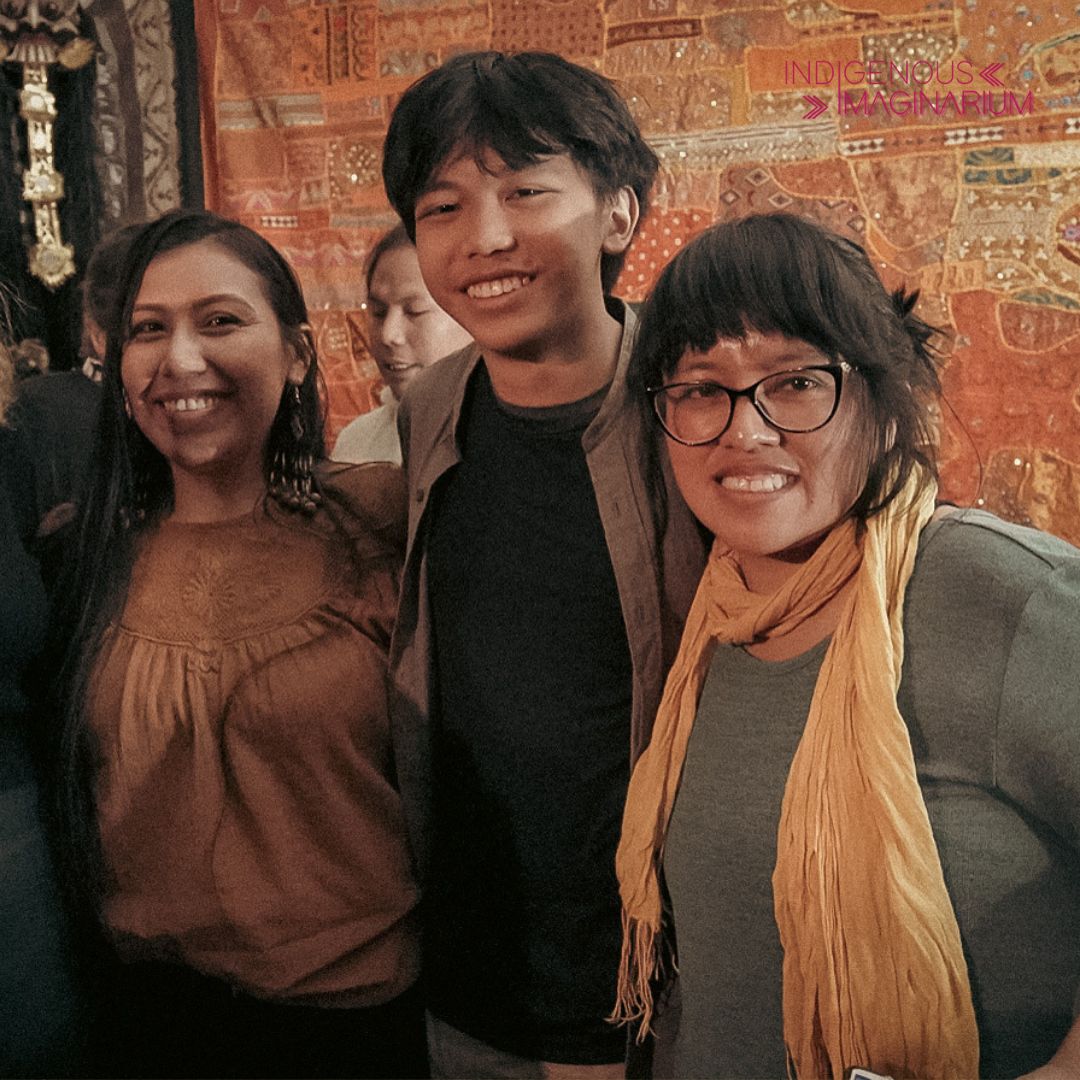
Image: Eric Terena – ‘Indigenous Imaginarium’ organized by If Not Us Then Who
Let’s take a closer look at the selected films and the talented artists behind them:
“Q’aq” – an extraordinary animated documentary short film directed by Tirza Yanira Ixmucané Saloj Oroxom, a member of the Maya K’iche’-Kaqchikel community in Guatemala. This documentary delves into the cultural and spiritual significance of fire in Maya society, offering a poetic and evocative portrayal through captivating visuals and descriptions that connect with ancestral energies.
Tirza Yanira Ixmucané Saloj Oroxom is a versatile artist, illustrator, and audiovisual filmmaker. She’s also a co-founder of the collective “Lemow”. Her work has received acclaim both nationally and internationally, and her participation in the 2023 Indigenous Imaginarium in Los Angeles profoundly influenced her creative approach.
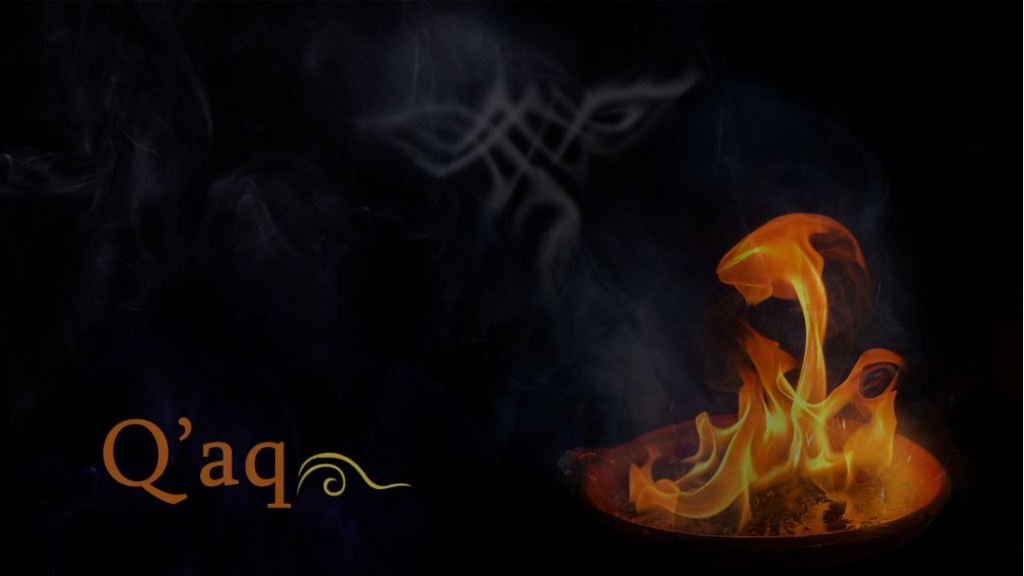
Lab Morelia Selected project by Tirza Ixmucané
The other project selected is a feature-length animated fiction film titled “The Mythical Journey of Sain and the Akalakui Elf”, directed by Elizabeth Pirela González, a member of the Wayúu community in Colombia. This captivating film narrates the journey of Sa’in, a young Wayúu woman, as she courageously strives to protect her sacred territory from a powerful corporation, embarking on a mystical journey that connects her with her ancestors.
Elizabeth Pirela González is a Wayuu director and screenwriter renowned for her work in film festivals in Colombia and abroad. Her film promises to take viewers on an exciting and culturally enriching journey.
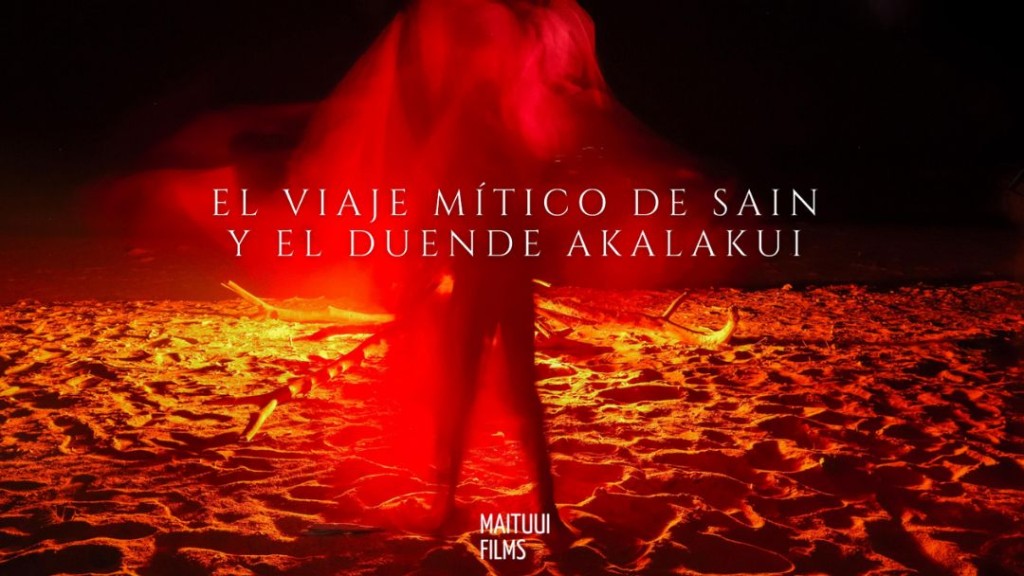
Lab Morelia Selected project by Elizabeth Pirela
In a recent interview, we had the privilege of speaking with these two talented filmmakers, Elizabeth Pirela and Tirza Yanira Ixmucané Saloj Oroxom, to gain insights into their artistry and the transformative impact of their experiences, particularly their participation in the Indigenous Imaginarium.
Interview with Film Directors Elizabeth Pirela and Tirza Yanira Ixmucané Salts Oroxom
Yurshell: With this interview, we aim to delve deeper into the creative worlds of these two remarkable artists. We’ll explore their experiences and emotions in the months following their participation in the Indigenous Imaginarium. This event allowed them to expand their networks and knowledge in the realm of audiovisual art.
Elizabeth and Tirza, could you please share more about the nature of your art and how it reflects the experiences and events of your respective territories?
Elizabeth Pirela: My artistic journey is driven by a powerful desire to use cinema as a medium to transcend cultural boundaries and reach global audiences. I firmly believe that cinema can serve as both entertainment and a bridge for connecting people, breaking down prejudices, and fostering understanding. As a mother and film director, I’ve felt a profound responsibility to convey essential messages to future generations and to find ways to transcend worlds and open a space for intercultural dialogue using cinema,while honoring my place as an Indigenous woman in the process.
My mission is to contribute to the field of Indigenous women’s cinema by narrating inspiring stories that make a positive impact. Above all, I aim to communicate the importance of reclaiming Indigenous ancestral wisdom to raise awareness among all communities. It is urgent to highlight that environmental and ecological damage not only affects Indigenous Peoples, but all living beings, human and non-human. This is an issue that concerns us all, and it is necessary to unite to protect our environment. Cinema, in my view, is a potent tool to achieve this goal.
Tirza Ixmucané: In my case, my artistic process is grounded in deep exploration and research. This forms the foundation of everything I create. I’m drawn to vivid colors, contrasting textures, organic shapes, and constant experimentation to bring these elements to life. Growing up in a Kaqchikel Maya community, the experiences and emotions of this territory are ever-present in my work. This includes the defense of our land, the agricultural cycles, our connection with nature, our closeness to our ancestors, and our ongoing struggle against discrimination, which has led to the erosion of our language and traditional practices.
Every time I express myself through painting or audiovisual media, my aim is to bring the rest of the world closer to these experiences. I want to offer a human perspective, free from exoticism or stereotypical portrayals that have often limited Indigenous representations in art.
How would you describe your experience at the ‘Indigenous Imaginarium’ in Los Angeles, and how has it influenced your careers or the stories you choose to tell?
Elizabeth: I genuinely appreciate this wonderful question. My time at the ‘Indigenous Imaginarium’ in Los Angeles was nothing short of a dream come true. I’ve always held the belief that as Indigenous people, we could make our mark in Hollywood with dignity and authenticity, honoring our unique stories.
One of the most memorable moments for me was the opportunity to connect with my Indigenous brothers and sisters from countries like Ecuador, Brazil, Colombia-Venezuela, Indonesia, Panama, Peru, and Guatemala. Each of them brought a distinct strength and unwavering conviction to the protection of our territories. They expressed this through their various artistic mediums, all sharing a common goal: the preservation of our territories, both on land and at sea and all the elements they encompass.
The ‘Indigenous Imaginarium’ has strengthened my determination to broaden my perspective and make a positive impact by highlighting the profound bond that unites us as Indigenous people – our innate and deeply rooted connection to the Land. Feeling the support of those who back our initiatives, as well as having mentors who not only understand but also deeply resonate and identify with our stories, provides me with a wellspring of strength and empowerment that runs deep within. This motivates me to stay on this path and, as Gandhi said, to embody the change I wish to see in the world.
How did this experience broaden your vision and the connections you make with the world?
Elizabeth Pirela: This experience has truly expanded my horizons. By connecting with my Indigenous brothers and sisters, as well as with producers, artists, creatives, and actors and actresses from various parts of the world during the ‘Indigenous Imaginarium’, I’ve come to appreciate the richness and diversity of perspectives within our collective fight to protect our territories and cultures. Moreover, this experience has afforded me the chance to forge deep connections with mentors and colleagues who share the same passion and commitment. These relationships serve as an invaluable source of support and learning, and have opened doors to opportunities and collaborations that I could never have imagined.
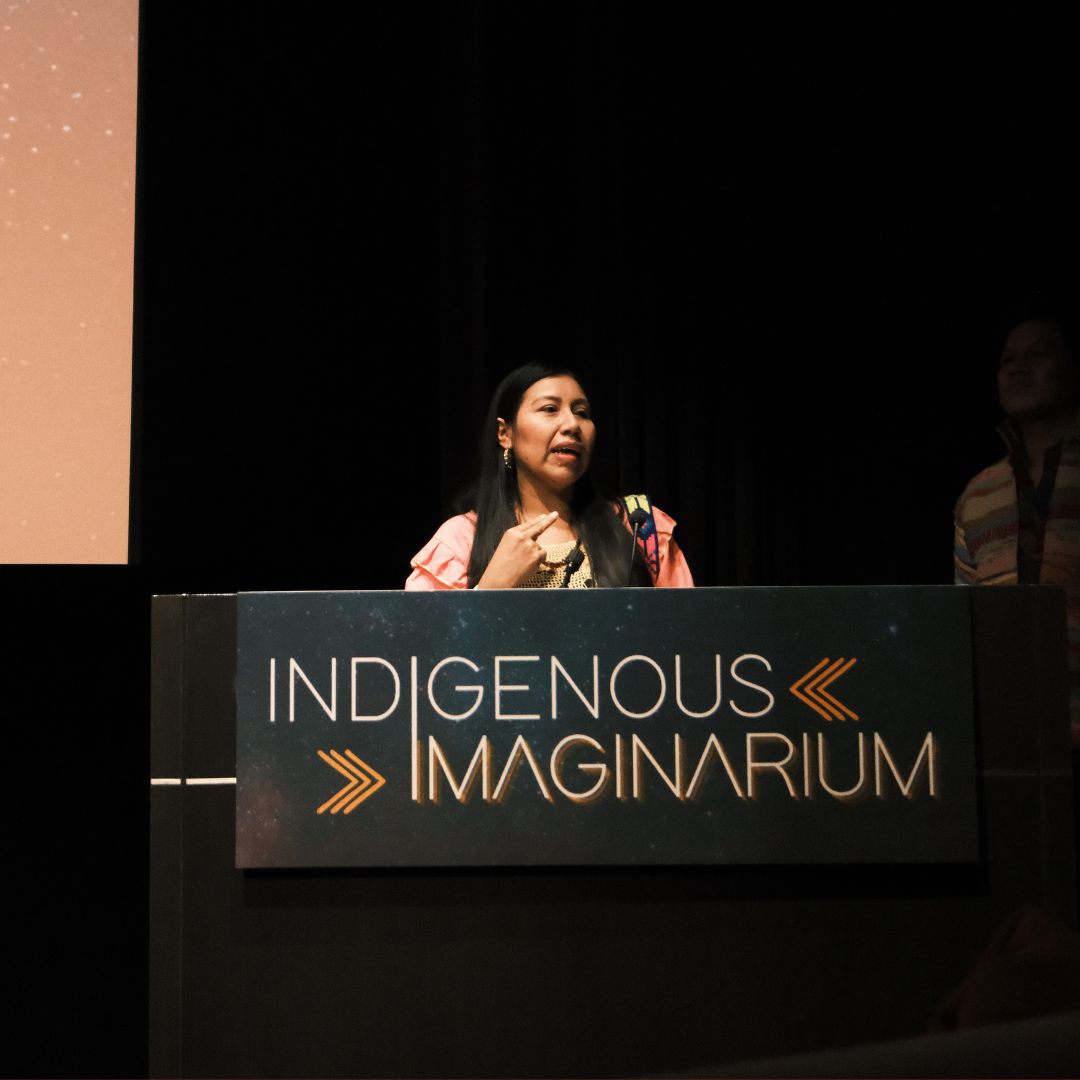
Tirza Ixmucané: Being part of such a powerful space like the Indigenous Imaginarium has made me reflect on the strength that arises when Indigenous and non-Indigenous people from around the world unite. Despite coming from different contexts and territories, we share similar struggles. By getting to know one another and engaging in collaborative processes, we enhance the resilience of each territory, break down the barriers defined by borders and limits, and contribute to the growth of the initiatives and dreams that every human being in the world carries with them.
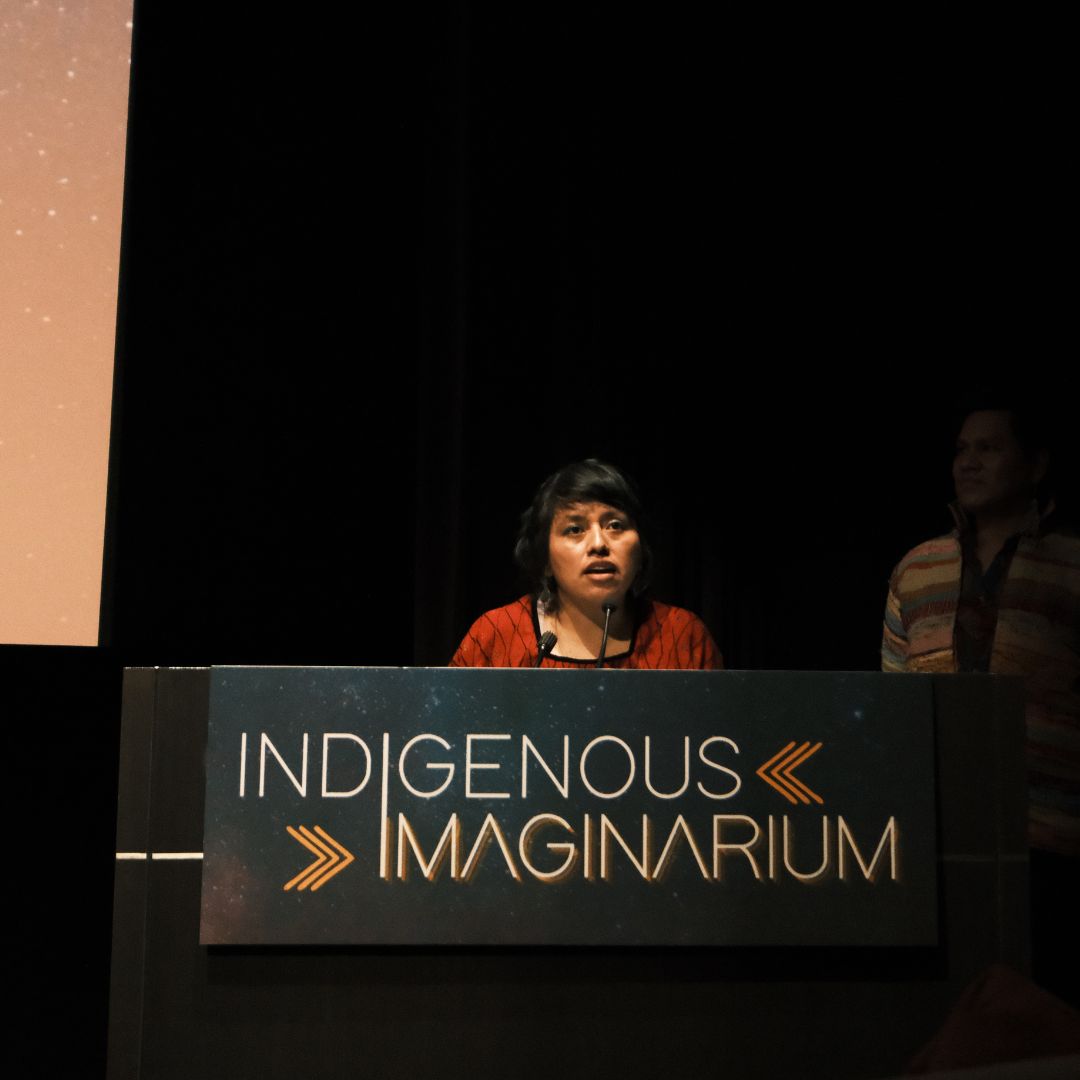
In the case of Tirza, how does the illustration technique manifest itself in the narratives of your territory and what impact has it had on attracting new audiences?
Tirza Ixmucané: For me, illustration serves as a means to bring memories, stories, and words to life through imagery. Being able to use animation in cinematographic proposals gives me the opportunity to convey the essence of our people’s cosmology and memory.
For Elizabeth, how does being a screenwriter and film director intertwine with the narratives of your community when telling stories?
Elizabeth Pirela: For me as an Indigenous woman of the Wayuu people, writing and directing stories is a powerful way to reclaim the narrative of my community and avoid negative representations.
First, it’s about tapping into the creativity that emerges amidst adversity. As a community with a rich oral tradition, our stories were often told by others. If we do not take the initiative to become the narrators of our own stories, these stories will continue to be told from other people’s perspectives. Film direction provides a valuable platform to express our unique worldview.
This creative process liberates us from external representations that have too often cast our community in roles of slavery or depicted us as primitive and marginalized beings. Through writing and directing, we hold the power to transform this narrative. It begins with telling stories deeply rooted in our spirituality and territory, and then molding those narratives to authentically reflect our identity, wisdom, knowledge, talents, emotions, and our vision for a more humane world.
How does it make you feel to have been chosen for the Morelia Lab?
Elizabeth: It’s an incredible, wonderful feeling! It’s a happiness that fills my heart to the brim, like a shout to the wind, an ancestral cry. When I read the email announcing our selection, it was cause for jubilation, especially considering that there were 120 applications competing for a spot! We are beyond excited, knowing that 15 filmmakers from diverse Indigenous communities in Latin America will be part of this Lab.
Today, it feels like we’re drawing closer to rewriting history, and it’s a joy to do so from an Indigenous, female, and diverse perspective – a voice that has endured double colonization. As women, we celebrate these milestones in the world of cinema, carrying the flag of a more compassionate and empathetic leadership. It’s as if the cosmos itself has aligned its constellations to guide us here! It’s as if the rhythm of our hearts resonates in harmony with the beating of the Earth itself.
Tirza Ixmucané: It has been a blend of nerves and excitement, coupled with a deep commitment to the story and the people involved in the development of this short film. I also see it as a fantastic opportunity for continued learning, a chance to explore different storytelling approaches from diverse territories, and an opportunity to glean insights from the processes of fellow creators. These spaces are always essential for strengthening narratives created by Indigenous Peoples and for building lasting alliances.
Could you share how your selection process went and how you have worked together?
Elizabeth Pirela: We supported each other at every step until we submitted our project, and now we are celebrating being selected. Without the Imaginarium, this collaboration wouldn’t have been possible. Today, I realize that we are a powerful force. It’s as if the voices of our ancestors merged with ours in a symphony of narratives that transcends time and space. I deeply thank the entire Imaginarium team for creating these synergies, which undoubtedly have universal significance.
Elizabeth and Tirza share that after returning from the Imaginarium, they experienced an incredible synergy. They shared their views of the world and the cycle of life. Sharing the same residence during the Imaginarium allowed them to connect deeply. They formed a bond and made a promise to stay in touch. Then, they heard about the call for applications from the Morelia International Film Festival (FICM) Development Lab and crafted an action plan. They met over Zoom to create a work schedule.
That’s how this exciting adventure began. Elizabeth and Tirza tell us that they have fully embraced the knowledge gained at the Imaginarium, especially the energy it transmitted to them. They have been steadfast in their support for each other, offering affectionate suggestions to enhance their respective work.
In their concluding thoughts, they expressed profound gratitude to their ancestors for bestowing upon them the vision and energy needed to unearth a deeper meaning and understanding of their true essence.
Meet Tirza & Elizabeth
Elizabeth Pirela / @elichon2018
Elizabeth Pirela is a Wayuu director and screenwriter from the Epieyü Clan, with Colombian-Venezuelan roots. She holds a Bachelor’s Degree in Letters and Comprehensive Education, as well as a Master’s Degree in Literature from the University of Zulia in Venezuela and a Master’s Degree in Script Writing for Film and Television from the Autonomous University of Barcelona. As a director, she has garnered recognition at various national and international film festivals, including the Audience Award for Best Short Film for “Majayut Señorita” (2010) at the XII Marseille et Region South American Film Meeting in France.
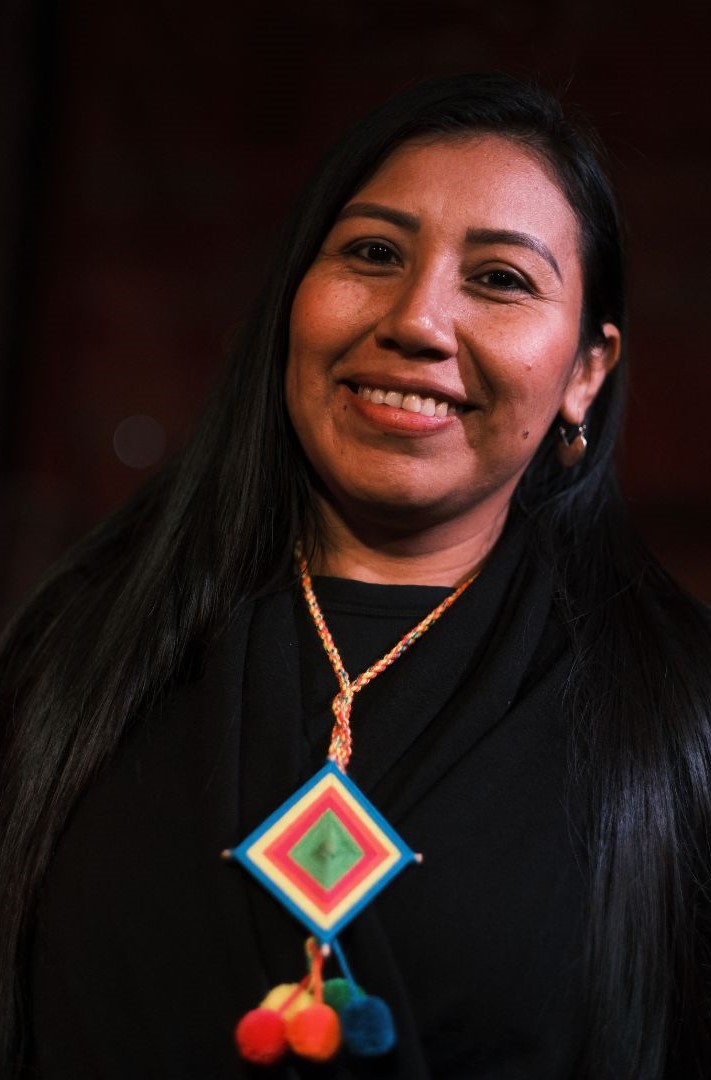
Elizabeth has directed and written short films such as “Majayut Señorita” and a 13-part series titled “Shimirra’in Wayuu: Traditional Wayuu Games.” Her latest short film, “El Silencio de las Semillas” (2021), has been selected in the 61st Cartagena de Indias International Film Festival (FICCI), as well as in other festivals in Chile, Peru, Spain, Germany, and Colombia. At the 2022 Venezuelan Film Festival, she won awards for Best Film and Best Direction for this short film. In 2022, Elizabeth participated in the “Desde la Raíz” script residency, sponsored by the Ministry of Culture and the Algo en Común Foundation. Most recently, in February and March 2023, she was part of the first generation of the Indigenous Imaginarium in Los Angeles, California, an incubator program organized by If Not Us Then Who? Non-Governmental Organization (NGO).
Tirza Yanira Ixmucané Salts Oroxom / @Ixmukanecolor
Tirza Yanira Ixmucané Saloj Oroxom is a K’iche’ Mayan woman from the Kaqchikel community in Guatemala. She is an artist, illustrator, and audiovisual producer, as well as a co-founder of the “Lemow” collective of women filmmakers from Guatemala. In 2023, she participated in the incubator for emerging filmmakers called ‘Indigenous Imaginarium’ in Los Angeles, California. In 2020, Tirza was selected at Talents Guadalajara as a production designer. She has also been part of various training programs for documentary filmmaking, scriptwriting, and art direction.
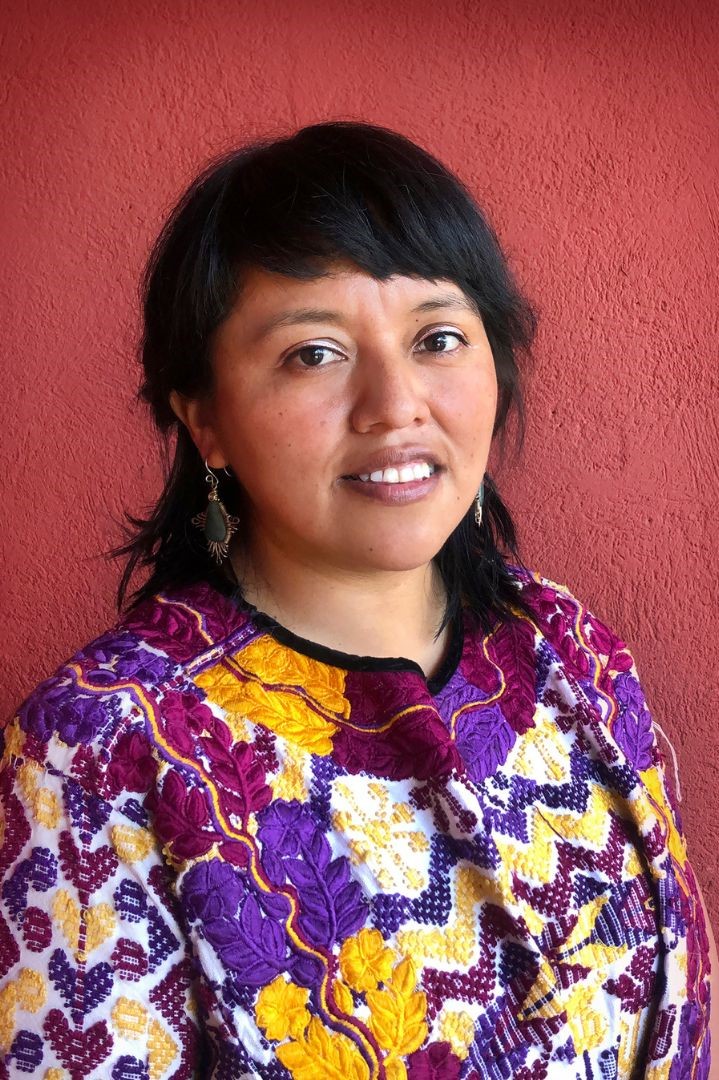
In the field of production design, Tirza has collaborated on music videos for artists like Sara Curruchich and Rebeca Lane, as well as on various Guatemalan short films. She has worked as an editor on upcoming documentaries such as “Jun Nyol, Jun Nb’is” and “Hilar las Venas,” in addition to several communication projects. Currently, Tirza is developing a series of 4 short films focused on the memory of the K’ich’e-Kaqchikel Mayan people, with the first short film titled “At’it” set to be released soon, while the other three are in the development phase. Through the Lemow collective, she has organized community film exhibitions, communication training sessions for Mayan communities, and artistic exploration workshops. Tirza’s work is characterized by its vibrant colors, organic shapes, textures, and a continuous exploration of image and sound. She also brings a critical perspective to her storytelling, addressing themes such as ancestral legacy, historical memory, respect for Mother Earth, gender equality, and the defense of human rights.
* Indigenous Imaginarium was a 7-day Hollywood incubator organized by If Not Us Then Who event in LA in collaboration with The Tenure Facility, Nia Tero, CAA Foundation, The Christensen Fund, Black & Indigenous Liberation Movement, The Territory Documentary by Nat Geo, One Small Planet and Artists for Amazonia. Together with industry professionals such as directors, cinematographers, and producers based in Los Angeles, the filmmakers developed their craft and form a writers’ room for new story ideas, influencing and inspiring the stories of the future. Learn more https://youtu.be/YAfXkCGihrQ